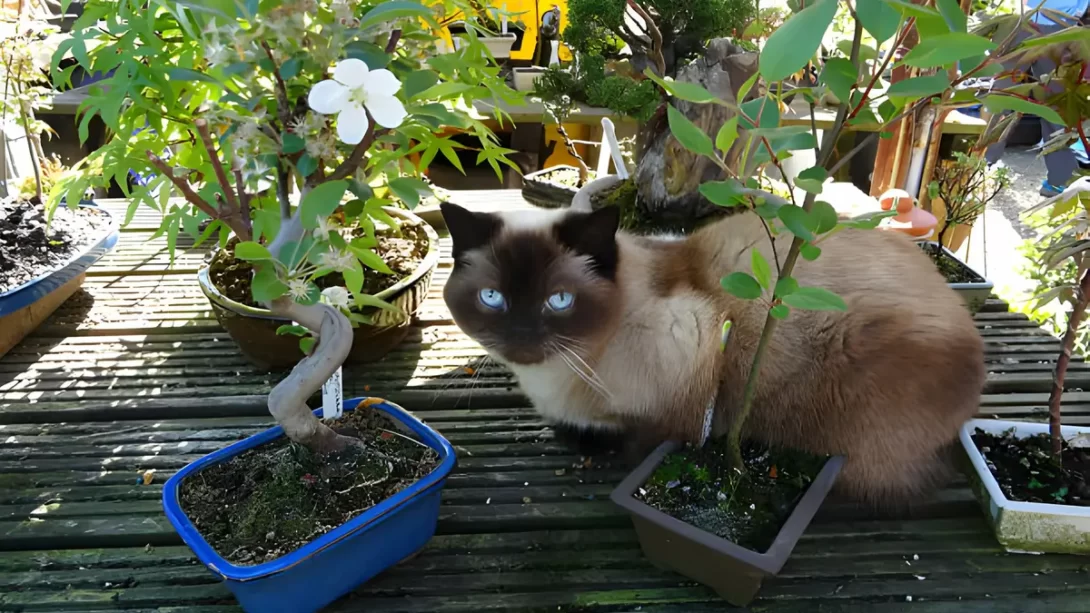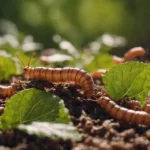Bonsai trees, with their miniature size and artistic shapes, are a captivating addition to many homes. While these trees bring a unique aesthetic to indoor and outdoor spaces, cat owners often express concern about the safety of these plants around their pets. This article aims to address these concerns, providing essential information on the toxicity of bonsai trees to cats and offering guidance for maintaining a safe environment for your furry friends.
Bonsai Trees
Bonsai is the Japanese art of growing miniature trees in small containers, a practice that dates back over a thousand years. Bonsai trees are not a specific species of tree but rather regular trees that are pruned and shaped to maintain their small size. Popular types of bonsai include the Ficus, Juniper, Pine, and Maple, each requiring specific care and conditions to thrive.
The appeal of bonsai lies in their beauty and the skill required to cultivate them. However, the diversity of tree species used in bonsai means that toxicity levels can vary, making it important for cat owners to understand which trees may pose a risk to their pets.
Bonsai Tree Varieties and Their Toxicity Levels
The toxicity of a bonsai tree to cats depends largely on the species of the tree. Some common bonsai species, like the Ficus and Sago Palm, are known to be toxic to cats if ingested. For instance, the leaves of the Ficus contain irritating sap, while the Sago Palm is highly toxic and can cause liver failure in cats.
On the other hand, there are also non-toxic varieties that are safe for homes with cats. These include the Olive, Bamboo, and certain types of Pine bonsai. When choosing a bonsai tree, it is crucial for cat owners to research the specific species and understand the potential risks.
Toxic compounds in bonsai trees can vary, but they often include saponins, alkaloids, and other chemicals that can be harmful to cats if ingested. The toxicity level can also depend on the part of the tree that is ingested – leaves, bark, or flowers.
Symptoms of Bonsai Tree Poisoning in Cats
Recognizing the symptoms of bonsai tree poisoning is crucial for the timely treatment of affected cats. The symptoms can vary depending on the type of bonsai and the part ingested, but common signs include:
- Vomiting and diarrhea, sometimes with blood.
- Drooling or difficulty swallowing, particularly if the mouth or throat is irritated.
- Lethargy or weakness, indicating a systemic reaction to the toxin.
- Abdominal pain, which may be evident if the cat is vocalizing more than usual or resisting touch.
- In severe cases, particularly with Sago Palm ingestion, symptoms can include seizures, liver failure, or even death.
If a cat has chewed on a bonsai tree, parts of the plant might be visible in or around its mouth, or in vomit.
First Aid and Treatment for Cats Exposed to Toxic Bonsai Trees
Immediate action is vital if you suspect your cat has ingested a toxic bonsai tree. First steps include:
- Removing Plant Material: Gently remove any remaining plant pieces from the cat’s mouth.
- Rinsing the Mouth: If the cat is cooperative, lightly rinse its mouth with water to remove residual toxins.
- Observing for Symptoms: Watch your cat closely for any signs of distress.
If any symptoms are present, or if you know your cat has ingested a toxic bonsai tree, seek veterinary care immediately. Do not induce vomiting unless instructed by a professional.
Treatment at a veterinary clinic may involve:
- Activated charcoal to bind the toxins.
- IV fluids to support kidney function and prevent dehydration.
- Medications to control vomiting, protect the stomach lining, and manage pain.
- In severe cases, hospitalization for close monitoring and supportive care.
Preventive Measures for Cat Owners with Bonsai Trees
Preventing exposure is key to ensuring the safety of cats in homes with bonsai trees. Cat owners should:
- Choose Non-Toxic Varieties: Opt for bonsai trees known to be safe for cats.
- Place Bonsai Out of Reach: Ensure bonsai trees are in locations that cats cannot access.
- Educate Household Members: Make sure everyone in the home understands the importance of keeping the bonsai tree away from cats.
Additional Recommendations for a Pet-Safe Environment
Creating a cat-friendly home while enjoying your bonsai hobby involves more than just selecting non-toxic varieties. Here are additional recommendations to ensure a safe environment:
- Regular Monitoring: Even non-toxic bonsai trees can cause gastrointestinal upset if a cat eats a large amount of foliage. Regularly inspect your bonsai trees for signs of nibbling.
- Use Deterrents: Natural deterrents, such as citrus peels or sprays around the bonsai, can discourage cats from approaching. Avoid using chemicals that could be harmful to both the cat and the plant.
- Training Your Cat: Positive reinforcement and training can help deter cats from exploring areas where bonsai trees are kept.
- Secure Shelving: Ensure that bonsai displays are on stable surfaces to prevent cats from knocking them over, which can be dangerous for both the plant and the pet.
Conclusion
While the art of bonsai brings beauty and serenity to many homes, it’s important for cat owners to be aware of the potential risks associated with certain types of bonsai trees. By choosing non-toxic species, placing bonsai trees out of reach, and monitoring your cat’s behavior, you can enjoy these elegant plants without compromising the safety of your furry family members.
Remember, the health and well-being of your pets should always be a priority. If you’re ever in doubt about the safety of a plant, consult with a veterinarian or a bonsai expert who can provide guidance. With the right precautions, it’s entirely possible to harmonize your passion for bonsai with responsible pet ownership. Enjoy the tranquility and aesthetic appeal of your bonsai trees, while ensuring a safe and happy environment for your beloved cats.



